- Home
- Neil Gaiman
The View from the Cheap Seats Page 27
The View from the Cheap Seats Read online
Page 27
I was fortunate enough to have met Harvey Kurtzman, in 1990, at the Dallas Fantasy Fair. He told me how much he appreciated what I was doing, which I took, not as any indication that he had read anything I had written, but as him expressing his pride in a younger generation of comics writers and artists. That there were bright young creators out there who cared about comics as an art form mattered to Harvey Kurtzman. He’d invested his life in the crazy belief that comics were art, and not anything to apologize for, and that investment reaped its dividends in the lives it influenced, in those of us who believed it too, and acted accordingly.
WHEN, AS A young man, my dream of getting to make comics started to become a reality, I started to meet comics people. These were the people whom I had looked up to in my teens, in my twenties, as gods upon the earth. These were the names that I conjured with. I would read everything I could about them when I was growing up, in a time when there was precious little about them to read, and even less of what they had done still in print.
And now I was to meet them.
And I discovered, to my surprise, that quite a lot of them were cranky old Jews. Or wannabe cranky old Jews—they seemed to be enjoying themselves too much to be properly cranky, and not all of them were actually Jewish.
And now, approaching my midforties, eighteen years after writing my first comic, I find myself heading down the conveyor belt towards cranky old Jewhood. I’m at the age where they start to give you lifetime achievement awards, and you rather wish they wouldn’t, because it may be some kind of a hint that it’s time for you to sit down and shut up.
It is the prerogative, however, of those who are one day to be cranky old Jews to give advice to the generations that will follow them. And while some of you are my contemporaries, and others are my seniors, I shall advise anyway. My first piece of advice is this:
Ignore all advice.
In my experience, most interesting art gets made by people who don’t know the rules, and have no idea that certain things simply aren’t done: so they do them. Transgress. Break things. Have too much fun.
Two: Read outside of comics. Learn from places that aren’t comics. Don’t do what anyone else is doing. Steal from places where people aren’t looking. Go outside. Many years ago, when it was almost unheard of for foreigners to write American comics, people used to ask why British writers were different. I had no idea. I did notice that when I spoke socially to people like Alan Moore, or to Grant Morrison, we mostly weren’t talking about comics. We were talking about avant-garde forms of poetry, about nonfiction writers, about weird things we’d found. Grant Morrison discovered a long-forgotten Victorian children’s author named Lucy Clifford, who wound up influencing both his Doom Patrol and, much later, my Coraline. We loved comics, but they weren’t all we knew. There’s a whole cool world out there. Use it.
Three: Read all the comics you can. Know your comics.
The history of comics is not a long one, and it’s not unknowable. We can argue about whether or not hieroglyphics were the earliest comics, or the Bayeux Tapestry or what. At the end of the day, we don’t have a long history. You can learn it. You can, these days more easily that you ever could before, study it. And the high points of the last century in comics are quite astonishing. There are things that Winsor McCay did in Little Nemo that are still unsurpassed. Things in Herriman’s Krazy Kat that are jaw-dropping. There are things, as a writer and as a storyteller, that Harvey Kurtzman did, that Will Eisner did, that Robert Crumb did that you should familiarize yourself with and learn from.
There’s more classic and important material in print now in affordable editions than there has ever been. Let it inspire you. See how high people have taken the medium in the past, and resolve to take it further.
Isaac Newton, even as he created the foundations of huge swatches of science, said that if he had seen a little further than most men, it was because he was standing on the shoulders of giants. We’ve inherited an art form from giants, some of whom were cranky old Jews, and some of whom weren’t Jews, and some of whom weren’t even cranky.
Another piece of advice:
I’ve learned over the years that everything is more or less the same amount of work, so you may as well set your sights high and try and do something really cool.
There are other people around who can do the mediocre, meat-and-potatoes work that anybody can do. So let them do that. You make the art that only you can make. You tell the stories only you can tell.
As a solution to various problems you may encounter upon the way, let me suggest this:
Make Good Art.
It’s very simple. But it seems to work. Life fallen apart? Make good art. True love ran off with the milkman? Make good art. Bank foreclosing? Make good art.
Keep moving, learn new skills. Enjoy yourself.
Most of the work I’ve done that’s been highly regarded has happened in places where, when I was working on it, I tended to suspect that it would go one of two ways—either I was doing something cool that, if I was lucky, people would talk about for some time, or I was doing something that people would have a particularly good laugh about, in the places where they gather to discuss the embarrassing mistakes of those who went before them.
Be proud of your mistakes. Well, proud may not be exactly the right word, but respect them, treasure them, be kind to them, learn from them.
And, more than that, and more important than that, make them.
Make mistakes. Make great mistakes, make wonderful mistakes, make glorious mistakes. Better to make a hundred mistakes than to stare at a blank piece of paper too scared to do anything wrong, too scared to do anything.
Critics will grumble. Of course they will. That’s one of the functions of critics. As an artist it’s your job to give them ulcers, and perhaps even something to get apoplectic about.
Most of the things I’ve got right over the years, I got right because I’d got them wrong first. It’s how we make art.
As a keynote speaker last year for the Eisners I said that compared to where I dreamed that comics could be, as a young journalist in 1986, we’re in a Golden Age.
And I was taken to task in certain circles for this, as if I’d said that this was as good as things could get, or that there was nothing at all wrong with the world of comics. Obviously neither statement is true.
We’re in 2004, the year that Dave Sim and Gerhard finished the three hundred issues of Cerebus, the year that Jeff Smith completed Bone, both monumental tasks, both unique. Cerebus cannot be compared with anything anyone else has done. It’s unparalleled in its evolving portrait of its subject and its subject’s creator. Bone is, beginning to end, the best fantasy tale anyone’s told in comics. That in itself gives me hope for the future.
It’s the year that my daughter Maddy discovered Betty and Veronica, and that gives me another kind of hope. Any world in which a nine-year-old girl can become, off her own bat, a mad keen comics collector because she cares about the stories, is a good one.
I think the Internet is changing things.
Twice in the last eighteen months the Internet has been used as a way of rallying around publishers who needed help. Good publishers who had cash flow problems, and who put out appeals for assistance, let people know that now was the time to buy. And people did. The Internet meant that information was given to the people who needed it.
Last week, a Web cartoonist with a large readership told his readership that he would really like to quit his day job and devote the time to the comic, if they could raise the same money he made in his day job. His readers dipped into their pockets, five dollars here and ten dollars there, and delivered the annual wages from his day job.
The Internet gives your comics cheap access to the world, without printing bills. It still hasn’t worked out a reliable way to pay people for their work, but Randy Milholland quit his job yesterday to do Something Positive full-time, and Top Shelf and Fantagraphics are both still here.
Despite the grumbl
ers, I think the Internet is a blessing, not a curse.
And if I have a prediction it’s simply this: the often-predicted Death of Comics won’t happen. There will be more booms and there will be more busts. Fads and fashions turn up in comics, as with all things, and, as fads and fashions always do, they will end, normally in tears.
But comics is a medium, not a fad. It’s an art form, not a fashion. The novel was once so called because it was indeed something novel, but it’s lasted, and I think, after a few shakedowns, the graphic novel, in whatever form, will do likewise.
Already some things are changing:
When I started writing about comics, before I ever began to write comics, I wanted a world in which comics would simply be regarded as a medium like any other, and in which we were accorded the same respect that any other medium was given. The amount of respect that novels and films and great works of art got. I wanted us to get literary awards. I wanted comics to turn up on the shelves of bookshops, and to sit next to books on the bestseller lists. Maybe one day a comic could come out and be on the NYT bestseller list.
We’ve got all that. And I don’t think it’s important after all.
Right now I actually believe that the best thing about comics may well be that it is a gutter medium. We do not know which fork to use, and we eat with our fingers. We are creators of a medium, we create art in an art form, which is still alive, which is powerful, which can do things no other medium can do.
I don’t believe that a fraction of the things that can be done with comics have yet been done.
For now, I think we’ve barely scratched the surface.
And I think that’s exciting. I don’t know where comics as a medium will go in the future. But I want to be amazed, and I’m pretty sure that I shall be.
And I trust that one day when you, whatever age, race, gender, or ethnicity you may lay claim to, are in your turn a cranky old Jew up here giving a speech, that will always remain true.
* * *
Keynote Speech for the 2004 Harvey Awards.
* * *
The Best American Comics, 2010
Page 1 panel 1
Space. The infinite vastness of everything. Seeing that’s a bit hard to fit into one panel, you’ll probably have to suggest it. I mean, if you can fit the whole universe in, then go for it. Otherwise, a galaxy.
NO DIALOGUE
Page 1 panel 2
The Earth, as seen from space. I think this would best be representational, rather than hyperrealistic. (Would we even recognize a realistic Earth, as seen from space?) North should be up, and North America should be easy to find.
NO DIALOGUE
Page 1 panel 3
A bigger panel. It’s America, the country, as seen from space, with bits of Canada at the top and Mexico at the bottom. All of it. Feel free to add labels to it. Amber waves of grain can be labeled “amber waves of grain.” Purple mountains majesty ditto. Also skyscrapers of Manhattan, alligators of Florida, the cable cars of San Francisco, and ever-so-slightly to the right of Minneapolis is the end of a tip of an arrow. It is labeled.
ARROW LABEL: Your Editor.
Page 1 panel 4
And this, from above, looking up at the world, is the editor of this volume. He is nearly fifty. He needs a haircut, has bags under the eyes, is wearing a black T-shirt and jeans. He has the little potbelly of a man who has spent too much of his life behind a desk and the haunted expression of a man one missed deadline away from disaster. His hands are in his jacket pockets, looking up toward our virtual camera, that has been zooming in on him. He’s talking to us:
EDITOR: It’s just wrong!
And about this point I decide that it’s probably kinder on the reader if I don’t write the rest of this introduction as a script to an undrawn comic, because comics really are a visual medium and a written description of what you would be seeing if I’d written this whole introduction as a comic is not the easiest way to assimilate information.
Comics, of course, are the easiest way to assimilate information, at least according to a study done by the CIA back in the 1980s. But a comics script is a strange hybrid beastie, part blueprint, part correspondence, part theoretical yogurt-starter. Let’s go to prose.
Imagine me telling you this. I would be outside in the garden of an old Addams Family–style house an hour’s drive from Minneapolis.
It’s just wrong.
It’s just wrong and I am a participant, dammit. I am a collaborator in this madness.
I have drawn you in by lending my name and my endorsement and my time. I have done my best to give you the impression that the volume you hold contains the Year’s Best American Comics. That by purchasing it, you will become au fait with the cutting edge. It says so on the cover, after all.
Buy it, read it, and know that you know what’s happening in comics . . .
Well, yes. Up to a point.
Take The Year’s. In this case, the year runs August to August. The biggest, the most important and, to my mind, the most fascinating comic of 2009, Robert Crumb’s retelling of the Book of Genesis, makes it into this book because an advance extract was run in the New Yorker.
Some of this material was published for the first time in 2008/2009. Some was simply collected in that time frame. Things I loved were excluded, and previous editors had not chosen them and nor would upcoming editors pick them. Oh, the injustice.
Best. It’s a weird sort of a word. I didn’t read every comic published in America over the time span of this book. I wish I had: it would have been fun. Jessica Abel and Matt Madden did not read everything published in America either. Twenty years ago, it might have been barely possible: today it’s a pipe dream.
(I remember arguing with Scott McCloud about his book Reinventing Comics, published in 2000, taking issue with his hypothesis that comics would find an easy outlet on the Web. I mocked him, pointed out how long it took comics to load, explained that paper would always be first port of call for young cartoonists, and was wrong about everything I could have been, except about the problems with getting people paid for their work. Sorry, Scott. You were right.)
We did our best. Still, I lay awake some nights wondering about the choices I made, suspecting that on another day I might have chosen a completely different set of pages.
American? A slippery term at the best of times, and here it slips through your fingers like mercury. American is, as a term, in this case, strangely parochial, fundamentally irrelevant and extremely difficult to define. The comics community is global. There are comics published in America by people who are not American that qualify as American and there are comics that don’t. (I loved a small strip in an American-published magazine that turned up to be by a Swede and is thus not here. Eddie Campbell is not represented in The Best American Comics purely because he is a Scot living in Brisbane, Australia.) (Your editor is English. He lives in America, and most of the comics he has written, during a career of writing stuff, have been published in America. Were they more or less American before I moved here? I do not know. Matt and Jessica are editing this book from Paris, the French one. I know that, left to myself, I would have declared all comics writers and cartoonists honorary Americans and made the issue moot.)
And finally, and most frustratingly, maddeningly, that peculiar and elusive term Comics, which started as strips and as Sunday pages over a hundred years ago, then became eight page sequences in longer periodicals, then grew to become twenty-plus pages of monthly story, and then mutated to become books, to become webcomics (often closer in spirit to the strips and Sundays than anything else), to become graphic novels, whatever exactly they are (and they are, I suspect, anything you want them to be).
Now, so many comics are being created and intended as books, as longer stories. Which on the one hand is a very good thing, as excellent art is being made. It also has its downside: books are long things, filled with reverses and characters, plot and event. They are mad marathons in which the reader and the creators coll
aborate. Any extract from a longer work, no matter how well chosen, is simply that: an extract from a longer work: and the real art is the longer work, with a beginning and a middle and an end, often in that order.
In this collection I’ve tried to find sequences that worked on their own, that gave a flavor of a book, that would interest, intrigue, or irritate you enough that they would perhaps send you out to buy the whole thing, while always aware that what you are seeing is incomplete.
(Insert a silent panel here. The editor is looking out at us. He looks out of sorts, yet, having ranted and raged and grumbled for several pages, is nowhere near as grumbly as one would imagine.)
But having said all that . . .
The power of comics is simply this: that it is a democracy; the most level of playing fields.
One of my favorite comics of 2009, which is not reprinted here for reasons of utter redundancy and avoidance of infinite self-reference, was Lynda Barry’s introduction to the previous-volume-but-one in this series. It touched on what comics are and what they do so well. And it revealed the biggest secret in comics: that anyone can do them.
You just need something to draw with and something to draw on. A pen, some paper. A computer program. You do not need to know anything. You just need to do it. To make it. And then you send it out into the world.
It can be about anything: an account of Hurricane Katrina and its aftermath, a small-town punk-rock adventure, an imaginary story of the life and loves of a failed architect on the run from his life, the story of two robots arguing about gnomes and a retelling of the first book of the Bible, all of these are comics: small colored glass squares in the mosaic that forms a picture of what was happening in comics this year, all wonderful, essential parts of a medium that is so often mistaken for a genre.
And if this book impels one person to dig deeper into the world of comics out there, or if one teenager picks it up in a library and sees a way to get something out of her head and into someone else’s and begins to draw her own comics, then its purpose is fulfilled.

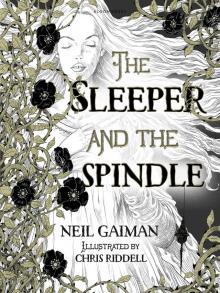 The Sleeper and the Spindle
The Sleeper and the Spindle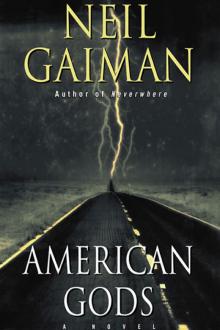 American Gods
American Gods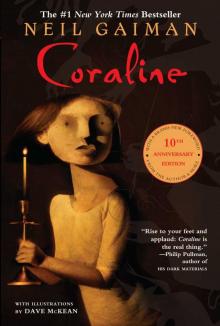 Coraline
Coraline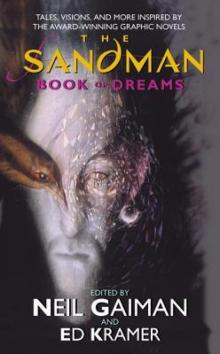 The Sandman: Book of Dreams
The Sandman: Book of Dreams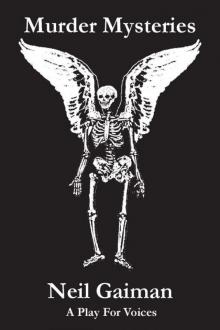 Murder Mysteries
Murder Mysteries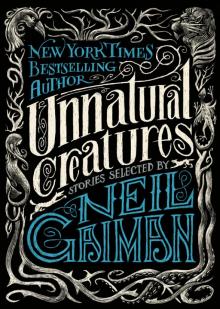 Unnatural Creatures
Unnatural Creatures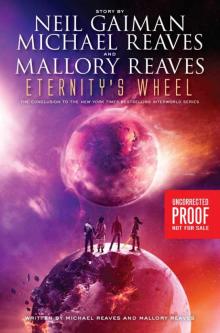 Eternity's Wheel
Eternity's Wheel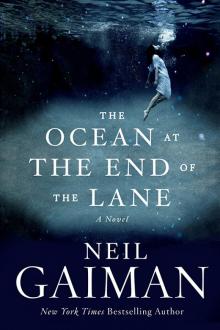 The Ocean at the End of the Lane
The Ocean at the End of the Lane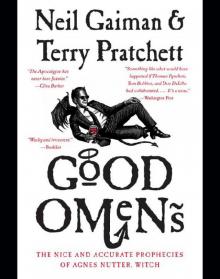 Good Omens
Good Omens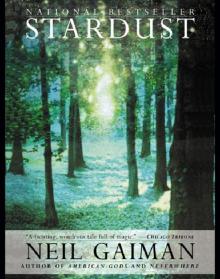 Stardust
Stardust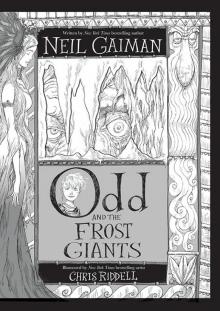 Odd and the Frost Giants
Odd and the Frost Giants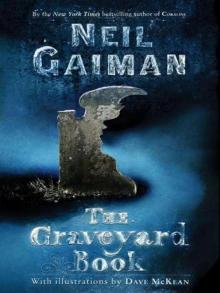 The Graveyard Book
The Graveyard Book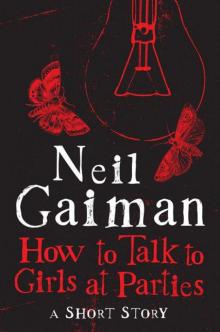 How to Talk to Girls at Parties
How to Talk to Girls at Parties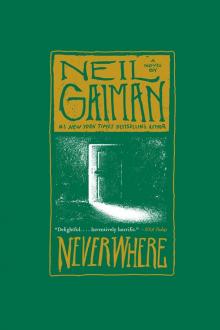 Neverwhere
Neverwhere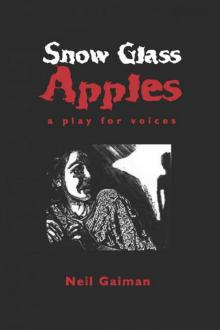 Snow, Glass, Apples
Snow, Glass, Apples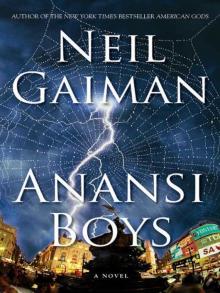 Anansi Boys
Anansi Boys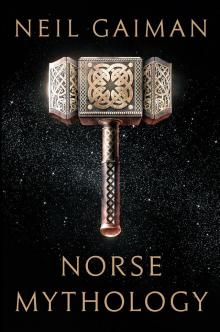 Norse Mythology
Norse Mythology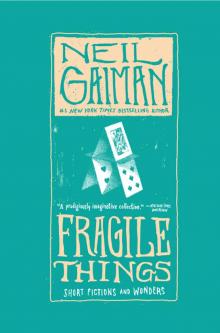 Fragile Things: Short Fictions and Wonders
Fragile Things: Short Fictions and Wonders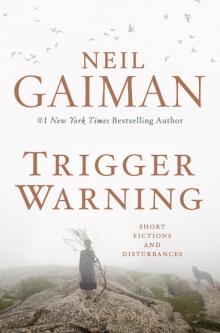 Trigger Warning: Short Fictions and Disturbances
Trigger Warning: Short Fictions and Disturbances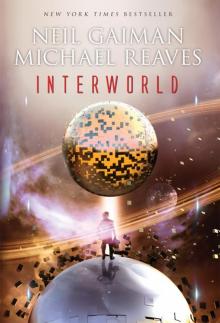 InterWorld
InterWorld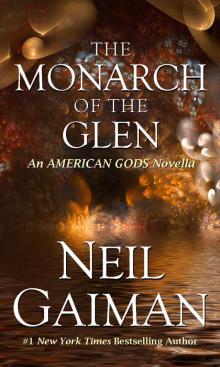 The Monarch of the Glen
The Monarch of the Glen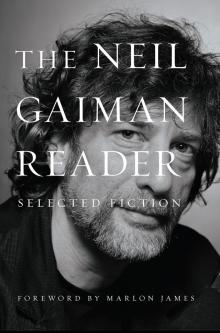 The Neil Gaiman Reader
The Neil Gaiman Reader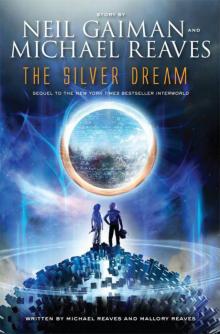 The Silver Dream
The Silver Dream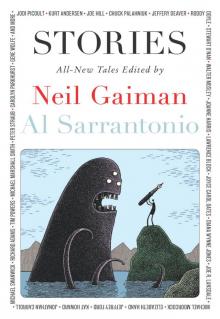 Stories
Stories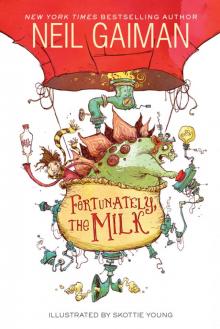 Fortunately, the Milk
Fortunately, the Milk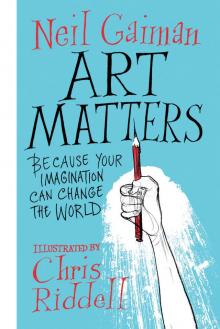 Art Matters
Art Matters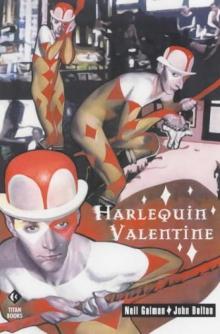 Harlequin Valentine
Harlequin Valentine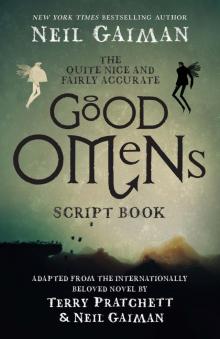 The Quite Nice and Fairly Accurate Good Omens Script Book
The Quite Nice and Fairly Accurate Good Omens Script Book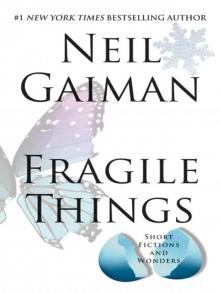 Fragile Things
Fragile Things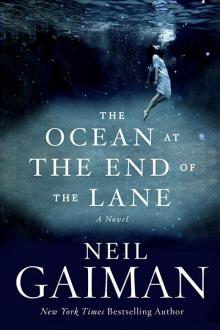 The Ocean at the End of the Lane: A Novel
The Ocean at the End of the Lane: A Novel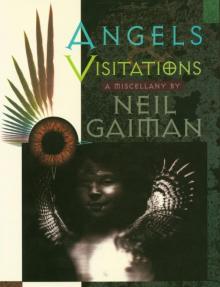 Angels and Visitations
Angels and Visitations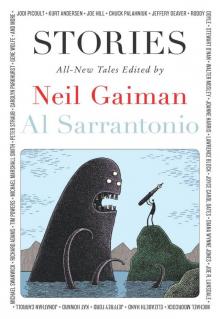 Stories: All-New Tales ngss-1
Stories: All-New Tales ngss-1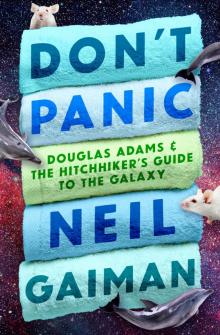 Don't Panic
Don't Panic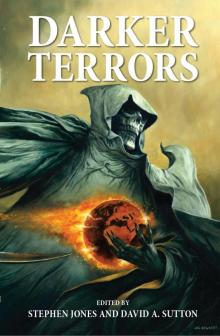 Darker Terrors
Darker Terrors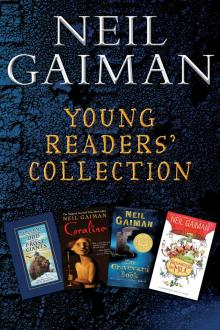 Neil Gaiman Young Readers' Collection
Neil Gaiman Young Readers' Collection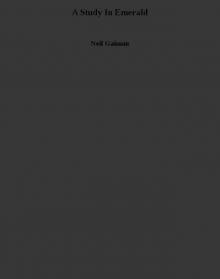 A Study In Emerald
A Study In Emerald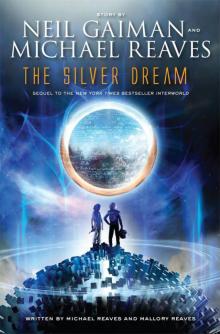 The Silver Dream: An InterWorld Novel
The Silver Dream: An InterWorld Novel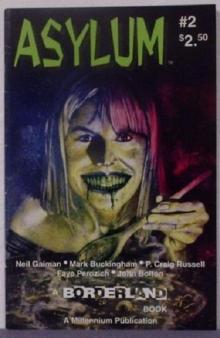 Feeders and Eaters
Feeders and Eaters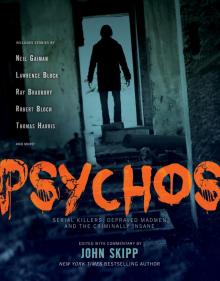 Psychos
Psychos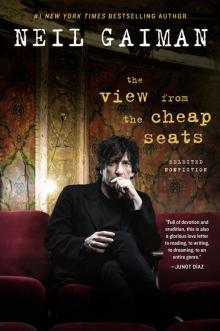 The View from the Cheap Seats
The View from the Cheap Seats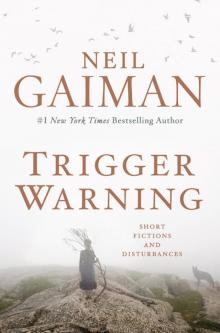 Trigger Warning
Trigger Warning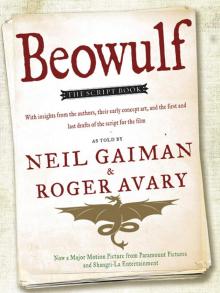 Beowulf
Beowulf Nessun Dove
Nessun Dove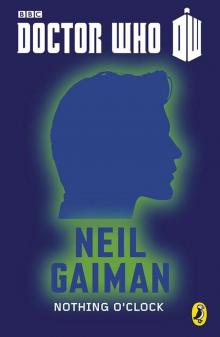 Doctor Who: Nothing O'Clock: Eleventh Doctor: 50th Anniversary
Doctor Who: Nothing O'Clock: Eleventh Doctor: 50th Anniversary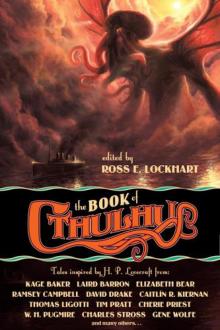 The Book of Cthulhu
The Book of Cthulhu